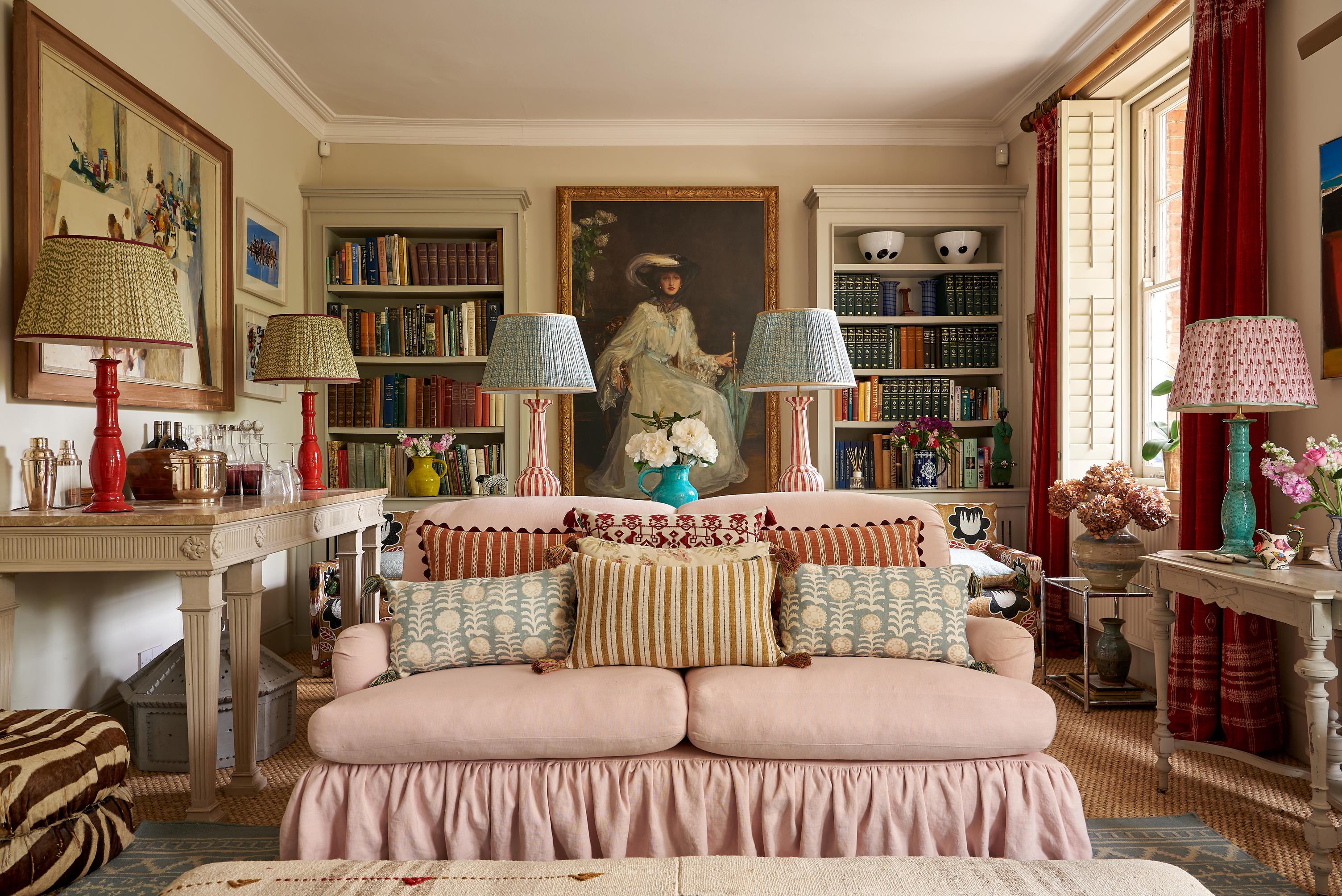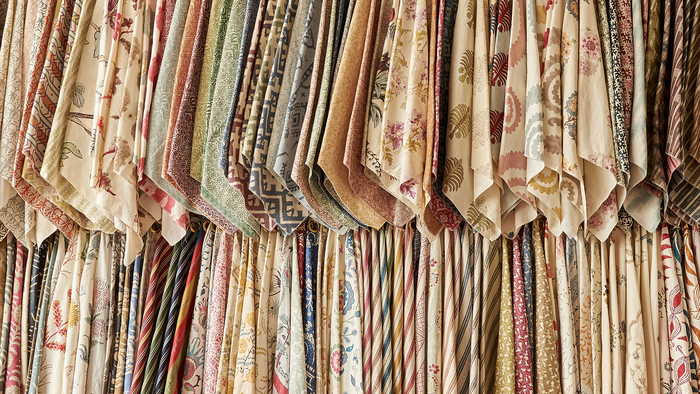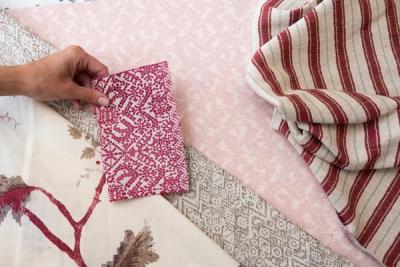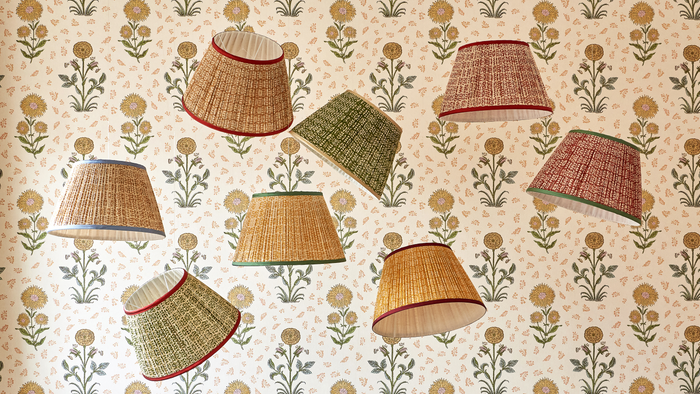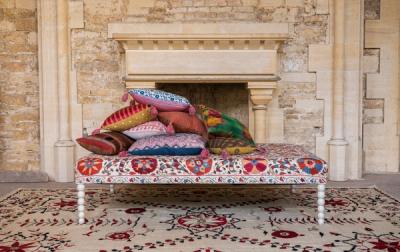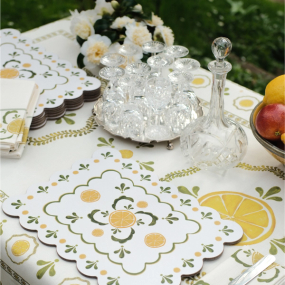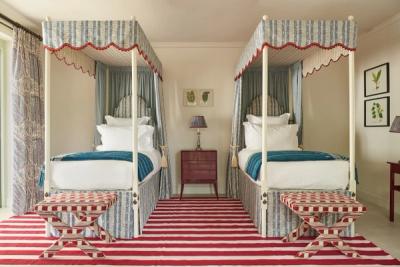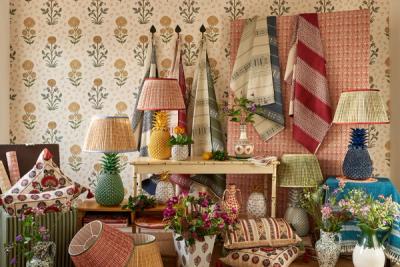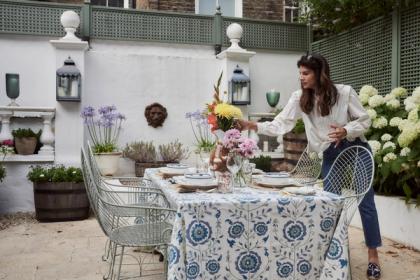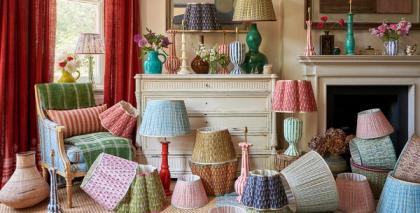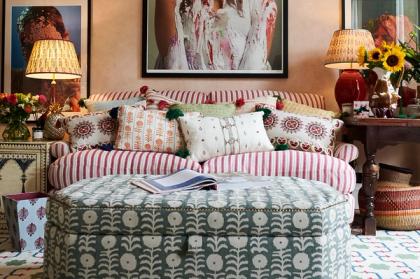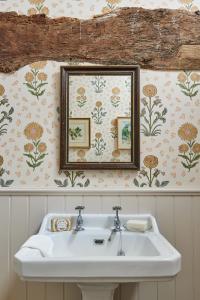Where to Start
10 Steps to Designing Your Living Room
Look around your living room in more detail and think to yourself, what would make me happy and more comfortable? That is always the best way to start!
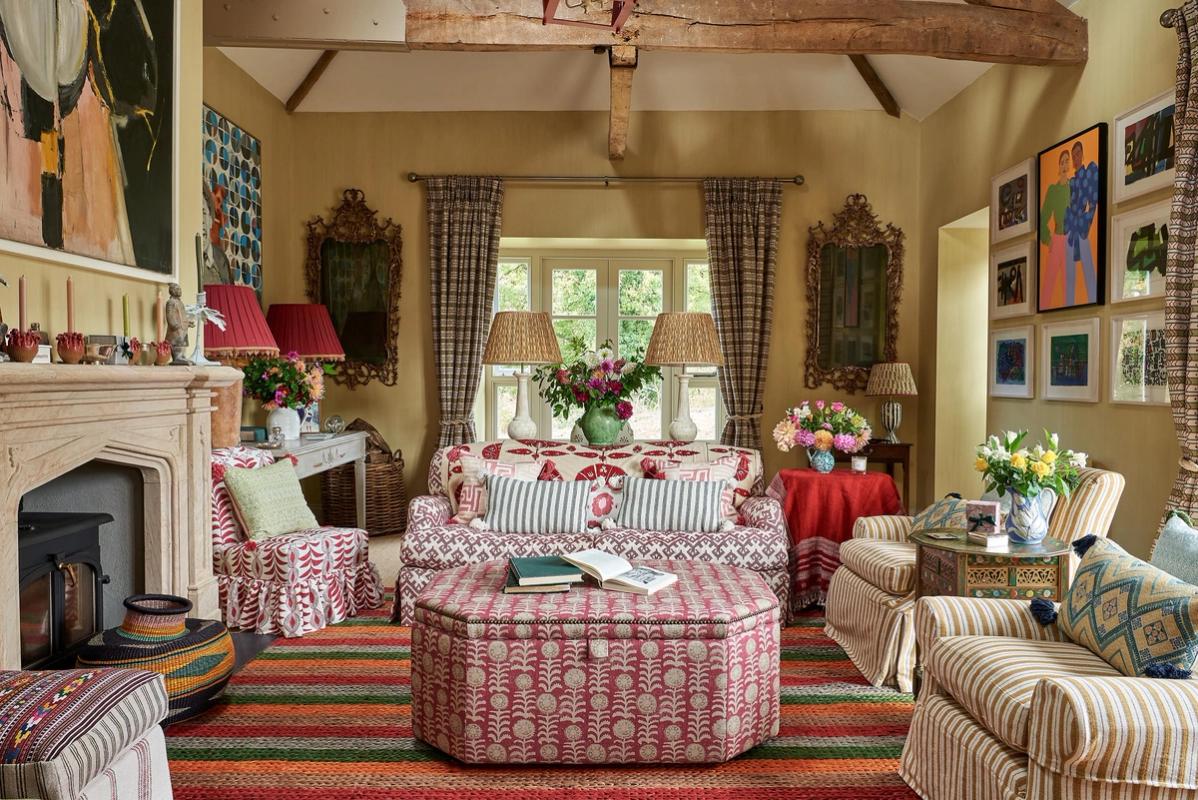
Every house needs to have a balance between being inviting, inspiring and incredibly comfortable, while also being practical. Life is fun and full of colour, pattern and texture, so why shouldn’t our homes reflect this? The living room is the central hub of most houses—an area where family, friends and guests gather—so it’s important that it’s both welcoming and functional.
At Penny Morrison, our approach is to develop schemes with rich textures built up with fabrics, furniture and accessories sourced from around the world. We believe that when designing your living room, you can be as creative as you want and let your personality shine through. Look around the room in more detail and think to yourself, what would make me happy and more comfortable? That is always the best way to start!
Here are our 10 steps to designing a living room that you, your family and visitors will feel instantly at home in.
1. Layout
Whatever the size of the living room, if possible, draw it out on a piece of paper and see what space there is for the biggest elements. This will give you an idea of how large the sofa or armchair can be, as big things in a room make it look larger and uncluttered. You want there to be enough things to make the space interesting but not too many little things, as it can look messy. Always bigger the better.
A comfortable living room layout should consider a good flow of movement that will support the key function of the space and allow smooth access to furniture. Try to avoid any awkward squeezes past sofas or side tables and ensure sockets are in the right place for lighting and entertainment before you start decorating.
We don’t really believe in ‘rules’ when it comes to design, but, thinking about comfort is key to pulling a space together. Picture how someone will use and live in the room. Ask questions like is there somewhere to properly relax? Are there enough spots where people can put their drinks down? For these reasons, we love styling a living area with deep sofas, feather cushions and plenty of side tables.
2. Colour
In order for a living room to feel welcoming, it’s important to build up layers throughout it by using different colours, patterns and textures. We like to introduce colour and pattern on soft furnishings with small-scale print fabrics and use a complimentary paint colour for the walls to add cosiness and softness to a scheme.
An important aspect to take into account is natural light and where in your living room receives the most or least light. As a general rule for small dark rooms, be brave and just fill it up with colour, you’ll find it's much easier to use a brighter fabric in smaller spaces.
If you have a room with lots of windows or doors and other bits of pieces, a good thing to do is to paint the entire room the same colour—the window frame, the skirting, the woodwork, the walls— as a full immersion of colour can create a calming backdrop without it being overpowering.
The living room colour palette can also extend to the soft furnishings, rugs and to create a cohesive and balanced look. Don’t disregard the option of dark colours and tones, they are ideal for a cosy and more intimate setting and can be contrasted with bright accessories.
3. Print & pattern
There are no rules for patterns—the mix-and-match approach has evolved dramatically over the years. Interior designers and decorators now feel braver to combine motifs and textures to create an eclectic look, and you can too. A home needs character and unexpected patterns and colours are a fantastic way to create this.
If you have decided to keep your walls neutral but are still daring enough to add a splash of colour, look to introduce an accent wall or a statement piece of furniture. If you have a larger living room, you can be bold with colour and experiment with striking patterns and contrasts.
Before committing to any print or pattern, we recommend placing large fabric samples around your living room—on your furniture or hanging them on existing curtains—and keeping them there for a few weeks to see if you love them more or like them less. If it keeps grabbing you, you know you have to fit it into the scheme somewhere.
Prints and patterns don’t all have to match. An eclectic mix of patterns and prints from your colour palette helps the diverse elements of the room complement one another. At Penny Morrison, we empower our clients to embrace a mix-and-match style as it creates a charming and playful feel and allows you to inject your personality.
4. Texture
Texture is another part of the puzzle when playing with prints and patterns. It is the key to layering and essential for adding depth to any scheme. It’s an element not to be missed when designing a living room as texture promotes comfort and cosiness. When selecting materials, think about how they will feel when you lay on them and weave softer and harder elements throughout your design for richness.
It’s always a good idea to try to incorporate patterns of different textures, such as weaves, heavy linens, stripes and florals. Upholstery is a great way to do this—floaty linens work very well for curtains and relaxed-looking loose covers, whereas weaves and richer textured velvets can add more formality. Rugs are another way of adding texture and softening a room aesthetically as well as softening a room’s acoustics.
5. Wallpaper
Wallpaper adds a layer of texture or pattern to any room and we love to use it as often as possible! It is more interesting than paint and can make a feature in any space. If you go for dark wallpaper, it creates a wonderful mood and warming atmosphere, perfect for designing a living room. You can do your colour scheme the other way around and match a dark wallpaper with lighter tones.
Flowerberry Orange wallpaper is one of our favourite designs to use for spaces that don't get a lot of natural light as it has the appearance of emanating its own light. It's therefore perfect for bringing vibrancy to interiors in the darker, colder months of the year.
You can use wallpaper patterns to exaggerate the shape of your room, for example, vertical strips elongate the room, whereas horizontal stripes make the room feel wider. If the living room lacks a focal point, like a bay window or alcove, you can create a statement by wrapping a wall with a playful pattern.
6. Furniture
It’s essential that you invest in a really comfortable sofa and chairs for your living area. We find custom-made furniture perfect for starting fresh, as it is made-to-fit for your unique layout and meets your personal comfort requirements. You can also have it designed in the fabric of your choosing—the possibilities are endless.
If you're tall and prefer lots of cushions on the sofa, the seat should be deep enough so that you are not propped up at the front and are able to comfortably lounge. A sofa should be as comfortable as your bed, as a living room’s main purpose is for relaxing and making you feel completely at ease.
In your living room design, plan for additional seating, whether it’s a slipper chair or a second sofa and ensure they are angled right for an inclusive feel. A coffee table or an ottoman is functional and decorative and can be placed as a centrepiece. Be sure to save space for side tables where you can place a series of lamps for an ambient glow.
Also note that low furniture creates a more relaxed vibe in a living room, whereas tall furniture or high-backed seating is more formal. If you have a bay window, you can convert it into a window seat for a cosy inlet.
7. Rugs
When you decorate a living room, you should start with a rug, as it's much harder to match a room to a rug. Let the rug dictate the tone of your living room. Working the other elements of the room towards a big coloured or patterned rug makes a living room—nothing pulls a room together quite like a rug does.
When placing a rug, you want it to be at least halfway underneath the key furniture in the room. Our favourite way to add impact with a rug—and this depends on the size of the room—is to go as large as possible, and extend it to about two feet from the walls. Anything too small will look pinched and uncomfortable. We love how rugs transform a space, bringing with them their own personality as well as warmth and texture.
While we don't love lots of little rugs, it's lovely to add a smaller rug in front of a fireplace, as it protects the floor from ash. If you have a large room, with two seating areas, allow each to have its own rug, with the base floor showing through as this area will get stepped on a lot.
8. Accessories
If you're not feeling brave, start with a blank canvas and you can always chop and change the look with accessories. Add colour and pattern to your scheme with bright bold accessories and think big, the bigger the better—large colourful accessories and lamps always make a room look grander. If something ever catches your eye, you've got to buy it!
Generally, if you are trying to create a calm atmosphere it is best to do upholstery in plain colours or muted small prints and then have larger bolder patterns on cushions, an ottoman or just one or two small chairs—it depends on the size of the room, the number of items that need fabric and your confidence.
We love cushions that complement rather than match the upholstery. A cosy vibrant and versatile throw on the back of a sofa adds colour and is even better if it can be used to pull over your shoulders on a cold night.
Pictures are a huge part of what a room feels like. You can fill a living room full of pictures and always work with the biggest ones first. Start with a huge mirror above the fireplace to reflect light from the outside and then build up each wall with pictures or ceramic plates. It doesn't matter what era or type as that makes it much more interesting. We do find that frames all the same shape and colour make a statement in a smaller room.
9. Lighting
Lighting is key to the atmosphere of any room. We love to light our living rooms with lamps—lots of them, preferably with colourful shades. Table lamps are perfect for creating a cosy mood and are easy to reposition throughout the room. They are also a great way to add a pop of colour and pattern.
As the central hub of our homes, the living room has to multi-task, which means lighting must be versatile. It’s best to have a range of light sources that can be dimmed when you want more ambience and brightened for functionality.
If you work from your living room, you will need plenty of light—adding two table lamps or floor lamps on either side of your workspace will create the stream of light you need. You can use accent lighting to highlight the living room’s best features, such as a piece of art, and add to the atmosphere of the space. We usually put small downlights in the corners of a living room on dimmer switches which can be used to gently enhance the illusion of daylight on a really dark day.
Overhead lighting can be bleak and lacks the ability to create an atmosphere unless you use lampshades to diffuse light around the room and create an ambient glow. Lampshades are the perfect opportunity to add more of your personality to the scheme and to introduce different motifs and patterns.
10. Curtains
Curtains are an opportunity to bring a layer of softness and cosiness to a living room. You can introduce colour and pattern on a large scale with curtains, from which you can choose a complementary paint colour for the walls and coordinating fabrics in the scheme. That said, we do love a room where the curtains and upholstery match as it gives a comforting unity to a room.
We like to use a neutral wall when we have selected a vibrant and colourful fabric for curtains and rugs. It ensures the fabric stands out and acts as a backdrop for other pops of colour in the room, such as art or perhaps a treasured vase.
If there are several windows in a room it is best to use plain or small patterned fabric on curtains to avoid them dominating the room and introduce the patterns on the upholstery or lampshades instead or have bold patterned curtains and keep the rest of the room simple and peaceful.
Bring your living room to life with our Penny Morrison range of bold, colourful and playful designs. You can now order our Penny Morrison fabrics and wallpapers by the metre at pennymorrison.com.
More from Where to Start
